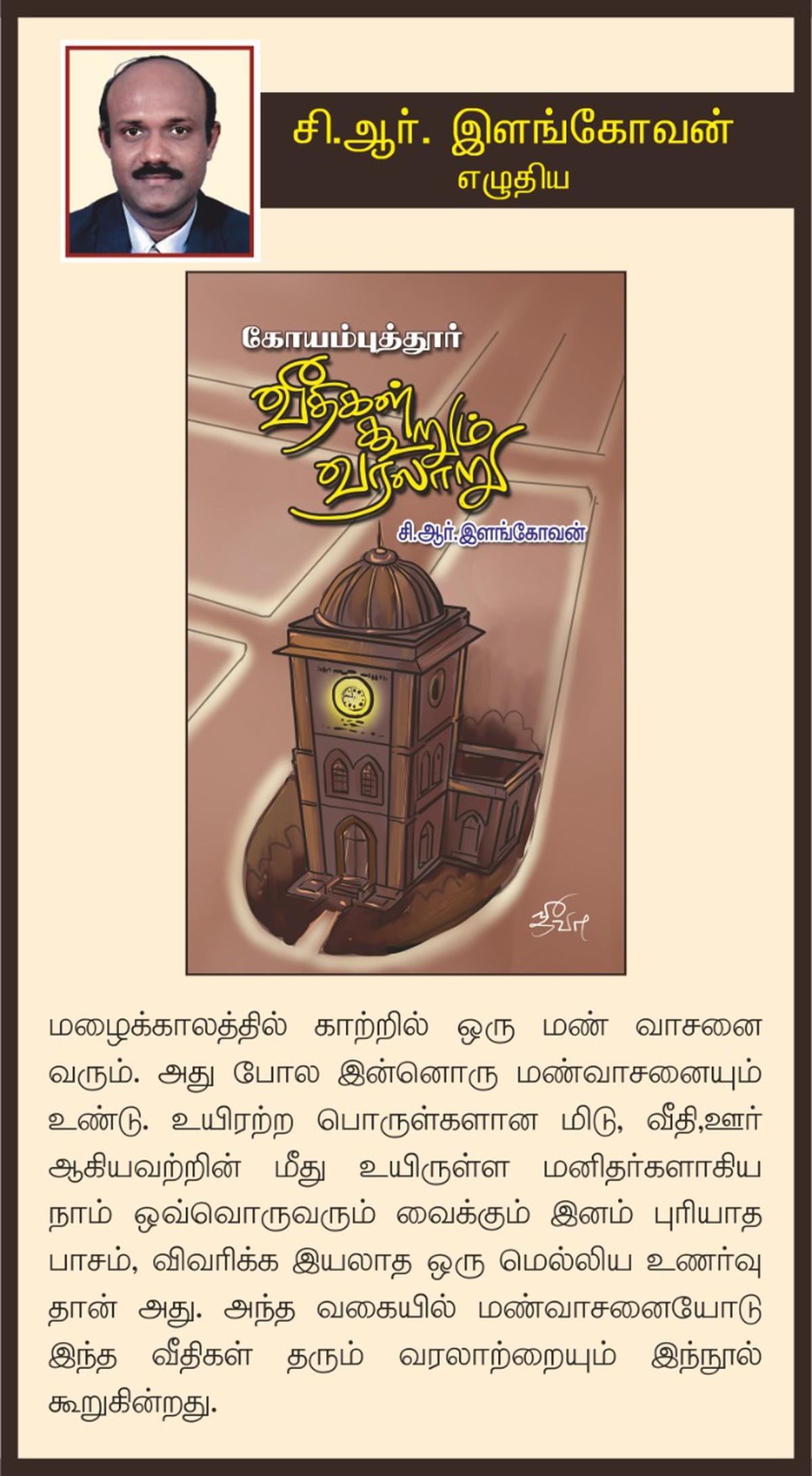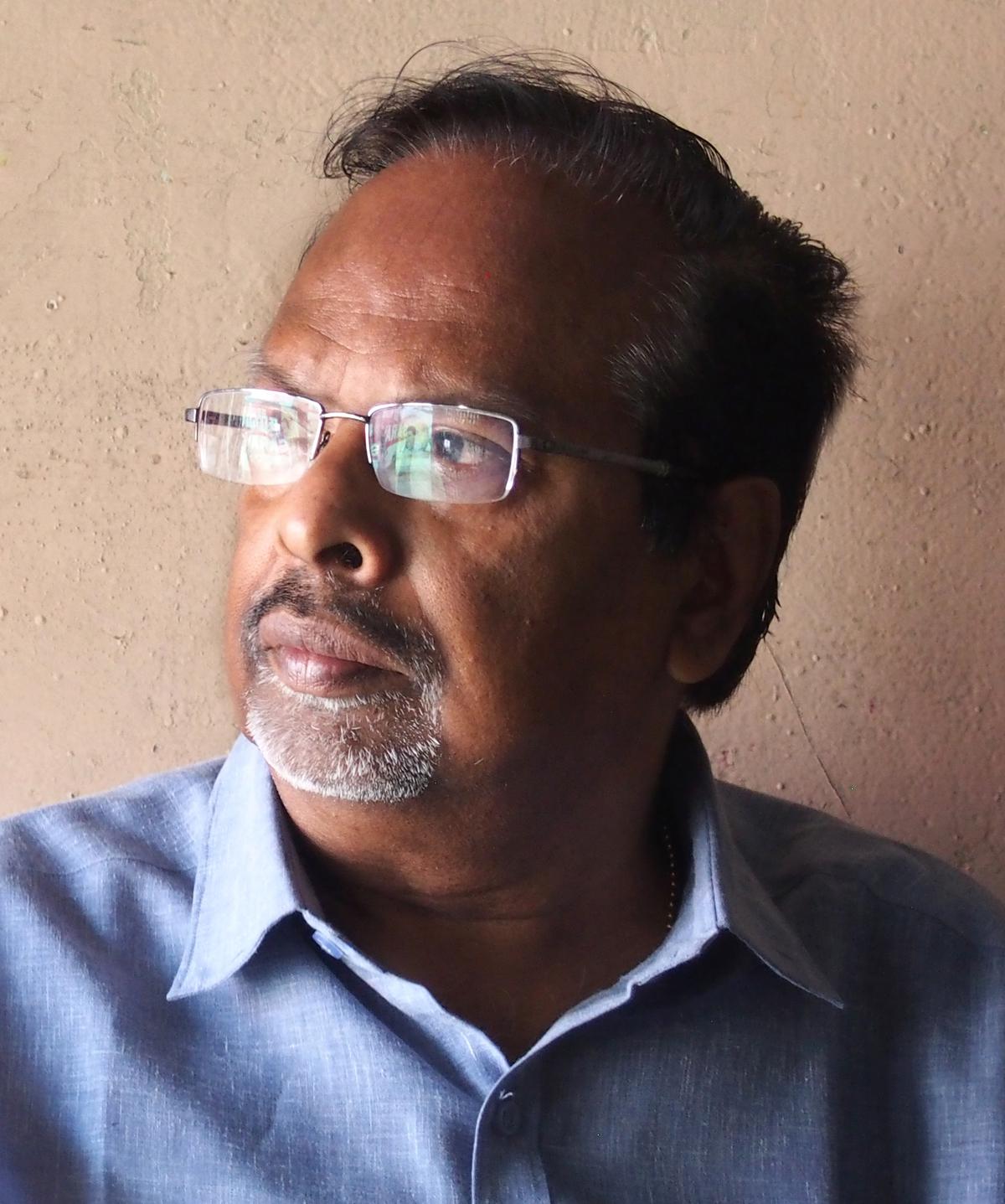A Roundup of Books on the History of Coimbatore, Masters of Cinema, and Compilation of Cinema Essays released at the recently concluded Coimbatore Book Festival
A Roundup of Books on the History of Coimbatore, Masters of Cinema, and Compilation of Cinema Essays released at the recently concluded Coimbatore Book Festival
‘Tribute to a great Guru’
S Anand
Film enthusiast, founder of the Konangal Film Society, and author of six books on masters of cinema, including the latest on Masaki Kobayashi, Werner Herzog, Akira Kurosawa, Vittorio De Sika, and Andrei Tarkovsky.
Regarding his new book on Andrei Tarkovsky (1932–1986) published by Tamzhini, Anand says, “This book is about Tarkovsky’s cinema, how he envisions this art form and creates his cinema and aesthetics. ” One of the greatest masters of all time, Tarkovsky made seven films. The first five were made in Russia. his first film Ivan’s childhood (1962) was a huge success and won the Golden Lion at the Venice Film Festival. It was about a young boy, Ivan, whose family is killed in World War II. He becomes part of the Soviet Army and eventually dies at the hands of the Germans. It is a strong anti-war film which is made without showing war but destroys people.
“His technique and aesthetics are still a topic of discussion at film gatherings today,” says Anand. The Swedish master Ingmar Bergmann, one of his contemporaries, is believed to have seen Tarkovsky’s second film. Andrei Rublev (about 14th century great painter who lived in Russia) more than 10 times. “Film masters including Robert Bresson, Antonioni, and Kurosawa respected his work,” says Anand, and points out that Tarkovsky often challenged existing norms in filmmaking in a way he had envisioned.
S. Anand | photo credit: special arrangement
The book features some Tamil translations of Tarvoski’s interviews from his book Sculpture in Time. Anand told his fourth film MirrorHis most complex and beautiful work is almost like a memoir from his own life. Listed as one of the greatest films of all time, it is like a collage painting and the cinematography slips between colour, black and white and sepia.
“In Russia, his films were respected as well as ridiculed as films made for the intelligentsia. But his films were highly appreciated by the working class, which is proved by their success. Mirror, When one looks at his seven films chronologically, one can understand how he went on to become a minimalist. Visually, every single frame is a work of art. He made only seven films and died 36 years ago. But, here in one corner of the world, in Coimbatore, his films are remembered and discussed. This book is a tribute to the great Guru.”
You can visit the Mosfilm channel on YouTube to watch Tarkovsky’s movies for free
‘Every street has a history’
CR Elangovan
Historian and author of 12 books on the history of Coimbatore
The bustling Krishnasamy Mudaliar Road or Brooke Bond Road, once called Palm Grove Road, bears testimony to a glorious past where the trade union movement flourished. “With the establishment of the Coimbatore Spinning and Weaving Mills (CSWM) in 1888, one of the oldest textile mills in the region, and later the Somasundara Mills and Kaleshwar Mills, this road cemented the birth of the revolutionary movement when the region saw a boom in textile mills and soon became the Manchester of South India,” says CR Elangovan, author of Vidhigal Koorum Varlarugal (Srikanth Prakashan) which introduces 87 roads in Coimbatore and the history behind their names. “Every street in the city has a story to tell. The book is an attempt to document them. There was also the Srinivas Theater in Brooke Bond Road which screened English films. “I remember seeing The Five Man Army There. Now, the theater has made way for an apartment complex,” says Elangovan.

book cover | photo credit: special arrangement
The book talks about Siviyar Vethi and Oppanakkara Street, a narrow lane located near the bustling Nawab Hakim Road, the colony of the ‘Siviyars’ of the fishing community since their migration from Mysore in the 18th century. the time of the Mysore rulers oppanavaru Means tax collector. “Nawab Hakim was a philanthropist and this street was named in honor of his contribution to the city. The youth should know about the history of the country. While we enjoy our sweet Siruvani water supply, we should also be aware of the 40-year struggle led by the visionary CS Rathina Sabpati Mudaliar, who took charge as a councilor as a member of the municipal corporation and then the chairman. Become. The main road RS Puram road testifies to his contribution.”
‘I share my lessons from cinema with readers’
V Jeevanathan
National Award winning book author Thirai Seelai, on cinema, and the founder of the Academy of Paintings that produced young artists. his second book oru bidi undo
This is how author Jeevanathan describes his second book – a compilation of essays and articles on cinema Oru bidi undo. Jeevannathan regularly contributes to magazines such as avanazibased in canada Thai Veedubased in sri lanka vyuham apart from others. “I am a film buff. I watch a movie every day. I share my experience and my lessons from cinema with readers. These are personal essays on cinema, actors, art directors, political films to name a few I talk about Clint Eastwood as well as Lijo Pellissery, and actors like Fahadh Faasil, Soubin and Yogi Babu,” explains Jeeva.

book cover | photo credit: special arrangement
The title, they say, is inspired by the famous code exchanged between communists – bediundoSakhawe Oru Thipetty Edukkani, “Many Malayalam films revolve around the rise of communism in Kerala. The first chapter of the book begins a discussion on the subject,” says Jeeva and lists the films that begin red salute, sandesham, arabicatha and Adoor Gopalakrishnan mouthfulWhich talks about the moral crisis of society and has an introspective look at itself and how communism affects whether one is pro-communist, anti-communist or neutral.
Some chapters highlight films that deal with the legal system by citing scenes from one of the first films in Tamil. parashakti, written by Dr K Kalaignar Karunanidhi, and known for the iconic courtroom scene featuring actor Sivaji Ganesan and his vivid dialogues. “I have also mentioned the award winning Marathi film court and more people like Jai Bheem And Chicago Trial 7, Essays in my film refer to films in all languages. I hope this book will inspire the youth to look for good movies to watch.

V Jeevanathan | photo credit: special arrangement
While the chapter ‘Mone Dinesh’ is devoted entirely to Mohanlal’s filmography, there are other articles that talk of Shiney Jacob Benjamin’s docu-fiction, In return: just a bookInspired by Perumbadavam Sreedharan’s bestseller oru sankirtnam pole, The Malayali writer wrote the book while living in a village in Kerala but his characters were the protagonists of a famous novel set in Russia.
Some essays make comparative studies with French films. For example, one of the early films Couple K Balachander was inspired by the 1990 French film Cyrano de Bergerac.